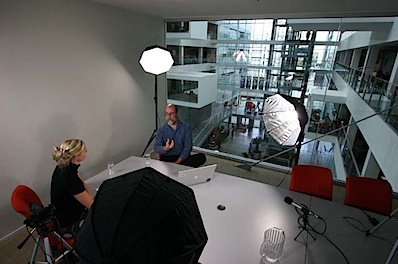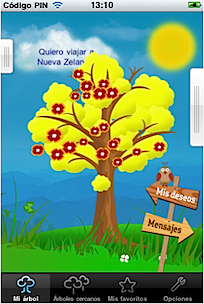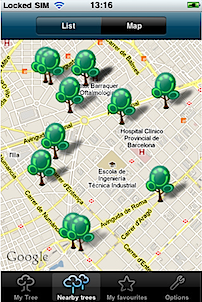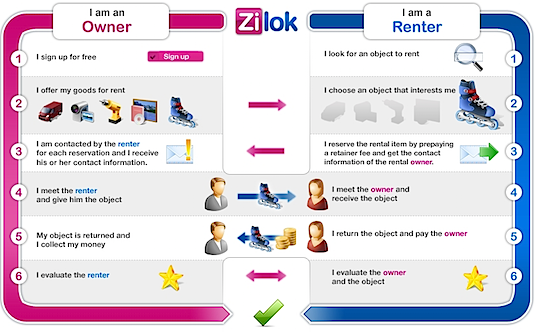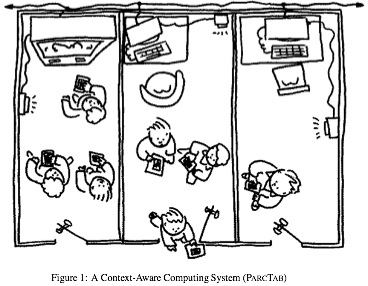Here are my notes of this year MobileHCI 2011. I presented the work we conducted last year on contextual applications with the UDSI team. The paper was titled: “Barriers and bridges in the adoption of mobile phone contextual services” – PDF: http://goo.gl/jgXlH, SLIDES: http://slidesha.re/oNAcVY.
MobileHCI 2011 has been organized in Stockholm, Sweden by the SICS and by the MobileLife center. I was in the organizing committee. I chaired the design competition. This year we had 420 registered participants. We received around 270 submissions out of which 63 papers were chosen for presentation at the conference (23% acceptance rate). Best paper award was given to a work of Niels Henze titled: “100,000,000 Taps: Analysis and Improvement of Touch Performance in the Large”.
The keynote was given by Jeanna Kimbré (Sony Ericsson). She started her talk with the premise that form (hardware design) should reinforce function (software design). In her line of thinking form should follow function + fun. Therefore they do lots of research on materials and colors to find the most appealing combination for what they call aesthetic expression (a combination of user experience and design). They follow the 6D (design, develop, distill, discard, delight). They publish every year a 250 pages trends report because they are a global organization and they need to be on the same page.
On the first day, I presented Karen’s paper in the session “Understanding mobile phone use”. Tricia Wang from UCSD presented the paper titled “Ethnography of the telephone: changing uses of communication technologu in village life”. The study was conducted in isolated villages of Guatemala. They conducted a focused field work on communication technology because in these villages usually adult males leave the country to find a job in the States and to send back the money to their family. Cell phone signal coverage is poor and even if there was they probably could not afford the fares. They use call shops called “caseta telefonica”, locutorios. These are important places to make and receive phone calls. People in the villages do not have private phones in their homes and therefore use the casetas. People are called through loudspeakers so everybody knows about the phone calls they receive. People in some villages now use a telefono fijo that is an hybrid embedding GSM technology. This kind of phones are used by a third of the families. These are typically shared by 4 families. Understanding how communication technologies are used in this places is important because these remote villages like this one exists everywhere in the world. We need to understand the social conditions that underly the use of technology. Implications: 1- cost of mobility -> for most people in the world mobility comes with a cost; 2- intermediate technology -> older technology comes back into intermediate ways.
MATTHIAS BOHMER presented a paper titled “Falling asleep with facebook Angry bidrs and kindly / a large/scale study on mobile application usage.” They tried to answer the question: How do people use their applications on mobile phones? Their work relates to the paper by girardello and michahellis, 2009 on Appaware. However, while this looks only at applications installed and disinstalled, they also look at how these applications are used. They developed an app sensor that was embedded within a recommender application for smartphone applications. APPAZAR. Basic findings: typical user uses an app for about one hour per day. They also have usage per category. App usage correlates with circadian circle. They showed a table of probabilities of applications being used in specific times of the day. They also looked at transitions between applications. Implications: 1- menus should adapt to time, location, previously used apps; 2- app design should incorporate apps transition patterns; 3- app sensor can provide additional context information.
HENRIETTE CRAMER presented a paper titled: “Performing a check/in: emerging practices, norms and conflicts in in location.sharing using foursquare”. They focused on applications such as foursquare that use a check-in model. Why does it work? There is a semantic naming of places. There is a gamification aspect because you can get points for checkins. They tried to understand foursquare usage motivations and norms. There are utilitarian reasons to check in. Also, for social-connection & self-presentation. To learn about new people and to discover new places. 17% of the participants of the study did not share their check-in with others. Why? For future reference, to get discounts, to self-motivational tool, and to pass time. Some people self-impose some rules such as actually visiting the place and not just passing by. The system does not impose this limitation. Some users only friends their inner circle. They say they would not want to friend strangers and colleagues and their bossed but they actually have this people in their friends list. People adapt to their audience. Some content is acceptable in one network but it is not acceptable on another network. Some users invent virtual places to make inner jokes such as checking into a bridge over the road where most people get stuck in morning traffic. The game element also affect the real world perception.
JAIME TEEVAN conducted an interesting study that is relevant to our work on Mobile Information Needs. The paper was titled: “Location, Time & People in Mobile Local Search”, They conducted a survey on mobile local search with 929 microsoft employee. They asked questions in what was the last local search they conducted on mobile decide. People search while they are on the go. People plan to visit the POI fairly soon and want the poi to be fairly close. 63% of searches were conducted with another person. 24% of reasons to begin search involved another person. About half of searches are for generic places. In addition to users’ current location the users’ destination is also important. People often use search results immediately.
MOHIT JAIN presented a paper titled: “Exploring display techniques for mobile collaborative learning in developing regions.” Many times it happens that multiple children interact in front of a single display. The paper review previous literature on this theme. They designed collaborative games that could be deployed in mobile devices for developing regions. They redesigned a collaborative version of boggle. In the experiment they compared a single display with pico projector with a multiple display on mobile devices.
RONALD ECKER from BMW research presented a paper titled: “EcoChallenge: a race for efficiency.” Their goal was to encourage the drivr to have a more eco-friendly driving style without patronizing him/her. They describe the designing a location based driving challenge. The driver bahavior can influence efficiency up to 50%. They designed a community based and in-car system that allow the users to compete in a challenge to maintain the most efficient driving style.
COSMIN MUNTEANU focused on adult literacy. He presented a paper titled: “Showing off your mobile device: Adult literacty learnung in the classroom and beyond.” Nearly 9 million Canadian adults are at low literacy levels (1 or 2). Literacy levels have not changed over the past decade. They studied eleven participants in two classes over six months. They designed a mobile application to improve reading skills for adults. They application offered also the possibility to understand the meaning of words. They referred to the TAM (technology acceptance model).
In the afternoon I took part in the context session where I presented our work on contextual applications. BRIAN LIM presented a nice work on the “Design of an Itelligible Mobile Context-Aware Applications”. They started from the premise that if users do not understand how application works they end up misusing or abandoning them. The work he is focusing on is how to make applications intelligible. How to design an intelligible context-aware application for mobile social-awareness. They designed LAKSA a prototype they designed to answer this question and to test previous findings. They describe 4 design strategies for intelligibility. They run usability studies to test these 4 strategies.
JOEL FISHER presented a paper titled: “Investigating Episodes of Mobile phone Activitys indicators of opportune moments to deliver notifications.” They tried to use contextual information to find when was the best time to show a notification on a mobile phone. They tried to model breakpoints in cognitive tasks. Opportune moments for delivery lay at the breakpoints between subtasks. They designed an experiment to test the hypothesis. They designed an application on the android to popup the question related to the interruption.
Later, I attended a session on navigation and wayfinding. STEFANO BURIGAT presented a paper titled: ¨Pedestrian Navigation with Degraded GPS Signal: Investigating the Effects of Visualizing Position Uncertainty¨. The basic question they tried to answer was: “How can we support navigation when the GPS signal is degraded or not available?”. Their solution was to make the position uncertainty explicit, visualizing an estimate of the area where the user might be located. The area of uncertainty is centered on the last accurate position. They compute the size of the area of uncertainty base on the motion of the user. They display the area of uncertainty as a circular area or as a colored street network. They conducted an evaluation where they simulated a degrated GPS signal and presented the users with one of the visualization (either circular or street network). They found that street visualization required a smaller workload (NASA TLX) than the basic visualization.
The first session of Thursday afternoon was on text entry technology. PER OLA KRISTENSSON presented a paper titled: “A Versatile dataset for text entry evaluation based on genuine email”. Text entry methods were usually based on methods that asked people to type predefined sentences. Experiments should be reproducible. They propose to use the EXXON dataset. Many emails in this corpus have been marked as sent by a blackberry. From this corpus they extracted 2239 sentences or fragments. They manually reviewed them and fixed spelling mistakes and removed duplicate sentences or incomprehensible sentences. They compared this corpus with other datasets obtained through desktop pcs and found that emails written on a mobile devices are different because contains less letters, they are written in 1st person, and they contain questions. The impications is that we should use this corpus to test text entry on mobile devices.
http://keithv.com/software/enronmobile/
SAURABH PANJWANI presented the paper: “Script-Agnostic Reflow of Text in Document Images”. Sometimes evectronic documents are available to users only in the form of document images (PDF bitmap). Screen width can hinder readability of text. With document images the user is forced to pan and scroll. Reflow tools exists but these works largely for english documents only. They rely on ocr (optical character recognition). Less than 15% of the wold speaks English natively. Increasingly books in such scripts are being digitized. Therefore they tried to answer the following question: “Can we build tools that can reflow non-english text without using OCR?” They designed a script-agnostic reflow for PDF documents and demonstrated the tool during the talk. Their method works for scripts that separate words by white spaces. They evaluated the technique with 4 languages: english, hindm hannadam and arabic.
KIMBERLY WEAVER presented an interesting paper titled: “Understanding information preview in email email processing”. The goal is to undertand the tradeoff between information preview in emails and workload. They asked participants had to triage their work email on a personal iphone. They were using their actual emails not corpus. They asked participant to repeat the task for a week. Each day they were using a different number of preview lines. The recorded the logs and they administered a questionnaire each day. From a log side they found that 3 lines are optimal, while use choice was on 2 lines.
YOUNGHEE JUNG presented an interesting paper titled: “Solving the Indian Text Input Puzzle”. In India there are 22 official languages in Constitution. 77 M English literate (< 10%) People in India they are not using their own language on mobile phones because these script languages are not supported on these phones. They aimed at designing a text input mechanisms that could minimize the learning curve and that could support all 22 languages. They designed the new input technology and this reduced dramatically the keypresses when compared to Panini and the Nokia ITU keypad.@JABBERER HTTP://YOUNGHEE.COM
The very same problem was tackled by ANIRUDHA JOSHI who presented a paper titled: “Devanagaru virtual keyboards for touchscreens mobile phones.” They designed a virtual keyboard that grouped vowels and consonants and that mapped them on the keyboard by frequency of use. Also, they applied a color code. They produced several designs and compared them.
JEFF PIERCE presented a paper titled: “Smart Phone use by non-mobile business users”. Mobile phones to produce information not just consuming information. People do less input of the information than consumption of the information. Device password and device limitations push people away from using mobile devices for their work. They did not observe any difference in terms of using a virtual vs. physical keyboard. People normally overestimate reading time, while they underestimate typing time. People normally think that doing tasks on mobile phones takes more time and effort. One of the implication of this work is that perhaps we can separate personal and business use through some sandboxing and ‘personas’ for devices.
Later I attended a session on the collaborative production of video. AUDUBON DOUGHERTHY presented a paper titled: “Live Streaming Mobile Video: Productions as civic engagement”. She works for the Comparative media study department, MIT. Their research question was the following: What kind of videos are actually being broadcast online through mobile devices. They studied Qik which is a smartphone app to broadcast video from the mobile. They assigned value tags to the videos found on the website to understand production trends. Thgey interviewed some of the top producers of videos in Qik. 11% of the video had personal values while the rest being personal videos. Civic videos were largerly generalistic. Users were largerly male. The average length of videos wer 7 minutes and 30 seconds while civic videos were 5 minutes longer in average. Sharing ideas with strangers was enough of a motivating factor to push users of Qik to produce their videos.
http://amd4.net
HELI VAATAJA presented a work titled: “Crowdsourced news reporting: supporting news content creations with mobile phones.” They focused on a hyperlocal community news. This is a local newspaper where readers send 20K pictures every year. At the moment, the journalists of the newspaper choose stories and then send MMS to volunteers/readers so that s/he can write a short article about the story and add some pictures on it. The best story that appears in the tabloid receive a prize. They are now looking at solutions to geolocate their readers to be able to assign them to stories that are also diverse in terms of coverage of the territory. They conducted a study with 9 participants. Most of them had stubmitted photos 2-3 times in last half a year. Their main motivation to participate was the incentive given. They conducted a study on SMS + location based assignments. They found several benefits for reporters and for the news room.
The final keynote was delivered by Adrian Cheok (university of Singapore and KEIO JP). His main argument was that we should move from informational communication to experiental communication. He showed a number of prototypes on experiental communication. E.g., giving hugs to your pet friends, hugging people at a distance, enriching paper communication. He showed examples of communication involving food printing. He also presented example related to sound and smell communication.
http://www.adriancheok.info/
